How to Play the Colombia Sport of Tejo
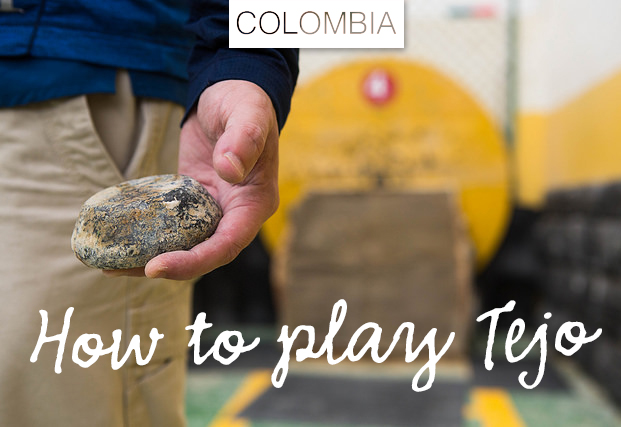
You’ll have a blast throwing rocks at gunpowder in Colombia.
Colombia’s national sport of Tejo is a lot like cornhole, except it’s much more explosive. Instead of trying to toss bean bags at holes in a wooden board, players throw heavy-metal pucks (tejos) at a clay-covered board (tablón) with a center target (bocin) decorated with four, small triangular packets of gunpowder (mechas) that ignite when struck. Bang! Throw in the required case of 30 beers, which covers the cost of playing the game, and you have the makings of an explosive evening.
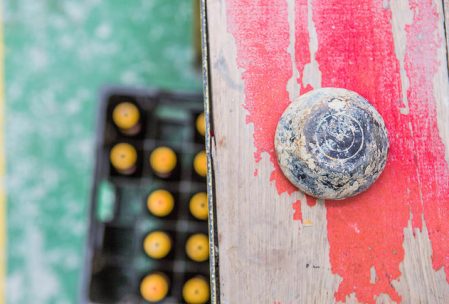
Tejo is one of the only sports you can play with a beer in your hand.
The game sparked my interest on my first visit to Colombia. I had heard that tejo clubs can get a little rowdy due to sheer amount of alcohol consumed in these joints, so I have been waiting for the right time to go. It definitely helps to have a large number of people in your group and the last few times I’ve been in Colombia, it’s been just me and my husband, Chris. This time around, I enlisted a friend, Luz Clara, to recommend a place for us to go in her home town of Bogotá. Her research led us to the Club de Tejo San Miguel at 3 o’clock in the afternoon and she brought along family friends Esteban, Manuela and Juan Camilo to join us.
The first thing you notice when you walk through the club’s door is the 20-foot-high wall of beer. The guy working there hands us a case and directs us to pick out our tejos from a locked wooden box. There were two sizes: the regulation tejo weighing in at 480 grams and a slightly smaller size — presumably for women and children. The latter, by the way, are not allowed in establishments that serve beer, although there are outdoor tejo fields in which children can play.
We are ushered through a chain link fence that encloses six 40-foot-long courts (canchas) with boards at each end.
The object is to get the most points. Throwing a tejo in the bulls-eye and simultaneously exploding a mecha earns a whopping six points — the ultimate goal. Considering the difficulty of doing that, there are other ways to increase your score. Players can earn three points for exploding a mecha; two points for hitting the bulls eye, but not setting off a mecha; and a point for having their tejo land closest to the center target.
After popping the the caps on the first round of beers, the game begins. I watch as Esteban, a more seasoned player, chucks the metal puck down the playing field. The tejo gets lodged in the thick clay. When it’s my turn, I just hope that I don’t completely embarrass myself; after all, I don’t have a feel for the physical relationship between the weight of the tejo and distance to the board yet.
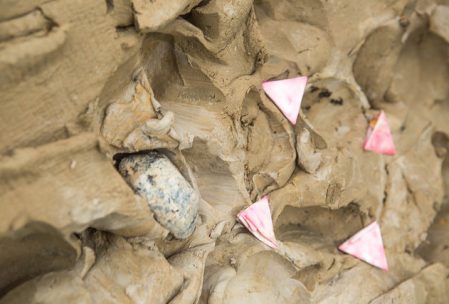
This tejo missed the mark.
Settling in to my best bowling stance — toes pointing forward with the tejo in my left at heart level with my right hand clasped over it — I take a deep breath and exhale. Swinging my left arm back, I take a step forward with my right foot and heave the tejo. The tejo arches through the air and lands at the bottom-most spot of the board. Not bad for the first try.
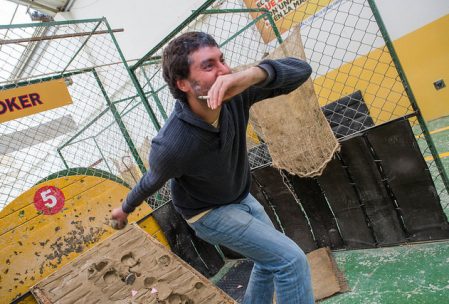
Juan Camilo’s unique throwing style.
Everyone has there own style of throwing the tejo. Juan Camilo holds it in one hand and places his right arm in front of his face as a counterbalance. He swings his arm a few times and releases the tejo and successfully hits the board. Manuela swings and comes up on her tippy toes as she releases the puck late in her swing. It arches up really high before coming to land just to the left of the board. No one has an explosive first attempt. As a group, we move in close to the board to figure out who came the closet. In the first round, Esteban wins. Grabbing a bent piece of rebar, he pulls out the tejos that are firmly lodged in the clay.
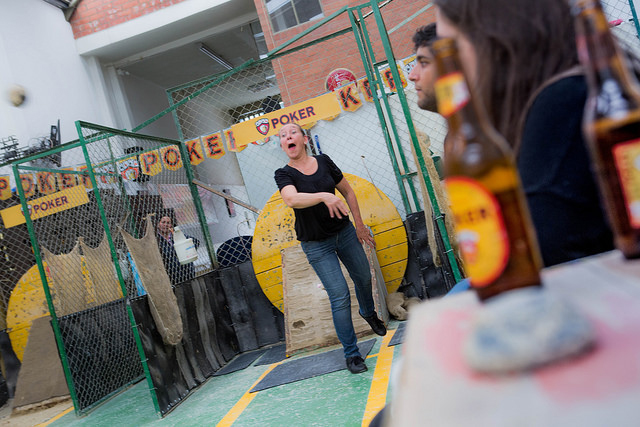
Luz Clara takes her turn throwing the tejo.
A new round commences when we start throwing toward the board at the opposite end of the court. For me (and I’m sure for everyone else), the goal is to hit the mecha. Just once. Please. Come on! In the meantime, Esteban nails one and a flame erupts and a loud blast reverberates off the walls and metal ceiling.
The game, which has evolved over the centuries, wasn’t always played with explosives. Originally called Turmequé, the game was played nearly 500 years ago by the Muiscas, inhabitants of the states of Cundinamarca and Boyacá. At that time, the game was played with a gold disk called a zepguagoscua. When the Spanish conquistadors arrived, they snatched up all the gold pucks to add to their coffers. At the same time, they also introduced the use of gunpowder in the sport, which was finally declared a national sport in 2000.
It may take awhile longer for Tejo to become an Olympic sport, but until that happens, you can experience the game on a trip to Colombia. Keep in mind that liquor and ammo make for a potentially volatile evening. We went early, not just to avoid the smoking and drinking masses, but also because it’s more likely a court will be available.
It took many attempts, but I eventually got to experience a direct hit. What a blast!
https://www.instagram.com/p/BTK0os3F0US/?taken-by=farflungtravels
Where to play Tejo in Bogotá:
I played at the Club de Tejo San Miguel located at Carrera 26 #78-24 in Bogotá. It cost 69,000 COP ($23) for a case of 30 beers. Located near the Transmilenio El Polo stop, it’s easily reached by public transportation. Facebook: SanMiguelClubDeTejo
Related story: Head over to Go Nomad to read Alison Spencer’s story Tejo: Colombia’s Own Game with Exploding Targets

Write a Reply or Comment